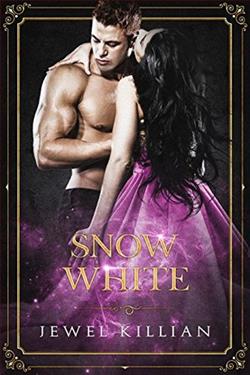Jewel Killian's Snow White (Once Upon a Happy Ever After 3) is a captivating retelling of the classic fairy tale that intertwines themes of forbidden love, desire, and the quest for personal freedom. Set against the backdrop of a lavish ballroom, the narrative unfolds with a tantalizing tension that keeps readers engaged from the very first page. Killian's ability to blend modern romance with the timeless elements of fairy tales makes this book a delightful read for fans of both genres.
The story centers around Alicia, a character who embodies innocence and purity, likened to "fresh snow." This metaphor not only highlights her beauty but also sets the stage for the conflicts she faces. The protagonist's father, a powerful figure within the company, represents the societal constraints that often bind young women in traditional narratives. Killian deftly explores the theme of forbidden love, as Alicia finds herself drawn to a man who is not only outside her social standing but also a potential threat to her family's reputation.
From the outset, the chemistry between Alicia and her love interest is palpable. The author paints a vivid picture of their first encounter at the ballroom, where Alicia's wide-eyed wonder and the man's confident demeanor create an electric atmosphere. The line, "This will be a night you’ll never forget, Alicia," serves as a promise of the transformative journey that lies ahead. Killian's writing style is both lyrical and evocative, allowing readers to immerse themselves in the opulence of the setting while also feeling the emotional stakes at play.
Character development is one of the standout features of this novel. Alicia is not merely a damsel in distress; she is portrayed as a complex individual grappling with her desires and the expectations placed upon her. As the story progresses, readers witness her evolution from a sheltered girl to a woman who begins to assert her own agency. This journey is particularly compelling as it resonates with contemporary themes of self-discovery and empowerment, making Alicia a relatable character for modern readers.
In contrast, the male lead is initially presented as the archetypal "bad boy," a trope often found in romance literature. However, Killian skillfully adds depth to his character, revealing vulnerabilities that challenge the reader's initial perceptions. His determination to pursue Alicia, despite the potential fallout, speaks to a deeper longing for connection and authenticity. This duality in their relationship adds layers to the narrative, making it more than just a simple love story.
The pacing of the novel is well-executed, with moments of tension and passion interspersed with quieter reflections. Killian's ability to balance these elements keeps the reader engaged, as they are drawn into the emotional turmoil that both characters experience. The ballroom scenes are particularly noteworthy, as they serve as a microcosm of the larger societal pressures that Alicia faces. The author’s attention to detail in these scenes enhances the overall atmosphere, making the reader feel as though they are part of the unfolding drama.
Moreover, the book delves into the theme of social class and its implications. Alicia's struggle against her father's expectations and the societal norms that dictate her choices is a poignant reminder of the constraints that many individuals face. Killian's exploration of these themes adds a layer of depth to the narrative, inviting readers to reflect on their own experiences with love and societal expectations.
While the story is rooted in the fairy tale tradition, it also offers a fresh perspective that sets it apart from other retellings. Unlike some adaptations that rely heavily on fantasy elements, Killian grounds her narrative in reality, making the characters' struggles and triumphs feel authentic. This approach allows for a more nuanced exploration of love, choice, and the consequences of defying societal norms.
In comparison to other contemporary fairy tale retellings, such as The Lunar Chronicles by Marissa Meyer or Queen of Snow by Laura Byron, Killian's work stands out for its focus on character-driven storytelling. While Meyer's series incorporates science fiction elements and Byron's work leans into fantasy, Killian's narrative remains firmly rooted in the emotional landscape of its characters. This choice enhances the relatability of the story, allowing readers to connect with Alicia and her journey on a personal level.
Overall, Snow White (Once Upon a Happy Ever After 3) is a beautifully crafted tale that resonates with themes of love, rebellion, and self-discovery. Jewel Killian's ability to weave a modern narrative from a classic fairy tale framework is commendable, and her characters are both engaging and relatable. This book is not just a retelling; it is a celebration of the complexities of love and the courage it takes to pursue one's desires against all odds.
For those seeking a romantic escape that challenges traditional narratives while still delivering the enchantment of fairy tales, Killian's work is a must-read. It invites readers to reflect on their own lives and the choices they make in the pursuit of happiness. In a world where love often comes with strings attached, this story serves as a reminder that true love is worth fighting for, even in the face of adversity.







![I Don't Feel Like Doing Anything [ Official ]](/upload/pic/manga/i-dont-feel-like-doing-anything---official--.jpg)
















Reviews 0
Post a Reviews: